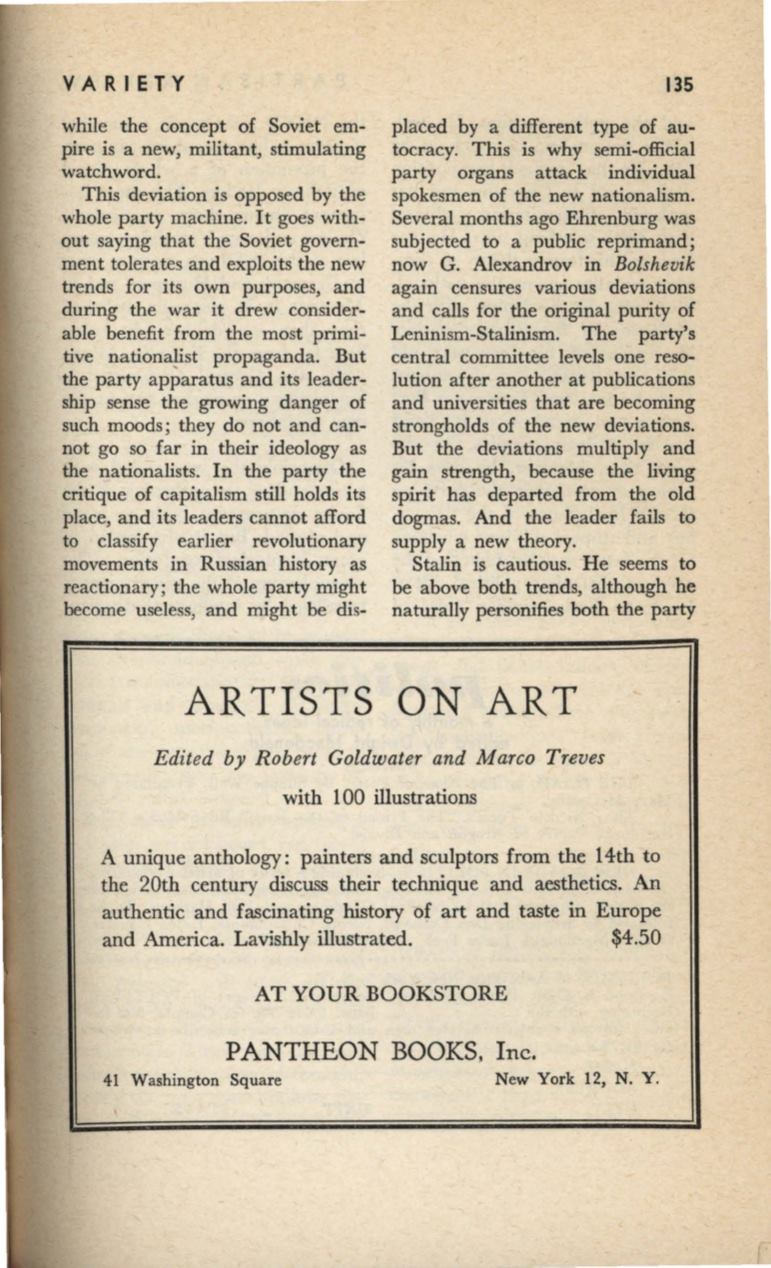
VARIETY
while the concept of Soviet em–
pire is a new, militant, stimulating
watchword.
This deviation is opposed by the
whole party machine. It goes with–
out saying that the Soviet govern–
ment tolerates and exploits the new
trends for its own purposes, and
during the war it drew consider–
able benefit from the most primi–
tive nationaJist propaganda. But
the party apparatus and its leader–
ship sense the growing danger of
such moods; they do not and can–
not go so far in their ideology as
the nationalists. In the party the
critique of capitalism still holds its
place, and its leaders cannot afford
to classify earlier revolutionary
movements in Russian history as
reactionary; the whole party might
become useless, and might be dis-
135
placed by a different type of au–
tocracy. This is why semi-official
party organs attack individual
spokesmen of the new nationalism.
Several months ago Ehrenburg was
subjected to a public reprimand;
now G. Alexandrov
in
Bolshevik
again censures various deviations
and calls for the original purity of
Leninism-Stalinism. The party's
central committee levels one reso–
lution after another at publications
and universities that are becoming
strongholds of the new deviations.
But the deviations multiply and
gain strength, because the living
spirit has departed from the old
dogmas. And the leader fails to
supply a new theory.
Stalin is cautious. He seems to
be above both trends, although he
naturally personifies both the party
ARTISTS ON ART
Edited by Robert Goldwater and Marco Treves
with 100 illustrations
A unique anthology: painters and sculptors from the 14th to
the 20th century discuss their technique and aesthetics.
An
authentic and fascinating history of art and taste in Europe
and America. Lavishly illustrated.
$4.50
AT YOUR BOOKSTORE
PANTHEON BOOKS. Inc.
41 Washington Square
New York 12, N. Y.


